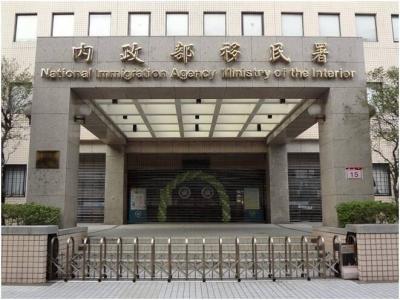Local gravel shipping operators are set to stage a demonstration at the Executive Yuan today to protest the direct sea transportation links agreement signed in November with China.
Taiwan Association of Gravel Importers spokesman Cheng Yung-ming (鄭永明) said they planned to gather at the Taiwan Democracy Memorial Hall at 9am and then proceed along Zhongshan N Road to the Executive Yuan, where they would stage a protest and present a petition.
Cheng said they would like the government to nullify the agreement on direct sea links, or they would not rule out the possibility of using their ships to stage a protest at the Port of Taipei after the Lunar New Year holidays.
Last month, the group made a similar threat if they did not receive a positive response from the government by Jan. 1. Cheng said they eventually scrapped the plan because the Ministry of Transportation and Communications had told them it would take care of the matter.
Association chairman Hsiao Sheng-chi (蕭勝旗) said they were very disappointed with the way the government had handled the matter.
“It has been more than half a month, but things are still the same,” he said.
Hsiao said they had voiced their concern before the agreement was signed and expressed the hope that they could talk to officials at the ministry face to face. They had also petitioned the Presidential Office on several occasions, but it had all fallen on deaf ears, he said.
Cheng said they were not going to trust the government any more, adding that the agreement on direct sea transportation links did not benefit Taiwan.
“Officials at the transportation ministry and the Mainland Affairs Council [MAC] seem to be working for the Chinese, not for us,” Hsiao said.
Cheng said Straits Exchange Foundation Chairman Chiang Pin-kung (江丙坤) has been trying to talk him out of pursuing the shippers’ case. Chiang also told him that he could not do anything to help because the MAC had not authorized him to negotiate, Cheng said.
Since Jan. 1, Cheng said 15 of the association’s ships have stopped operating and that they had lost NT$73 million (US$2.3 million) in the last half a month.
Cheng has two ships that have been transporting gravel from China since 2000. He said he cannot afford to sell them because each cost him more than NT$300 million, but now he could only sell them for about NT$30 million.
China has approved 10 of its own ships for the direct sea transportation links, but Cheng said five of them had never shipped sandstone before. The five Taiwanese ships authorized to transport gravel across the Strait before the agreement was signed must apply for new permits from both Taiwan and China, but China had approved only three, he said.
What is worse is that the three ships cannot transport river sand, which is more popular because of its better quality and accounts for more than 75 percent of the local gravel market, Cheng said. Rive sand can only be shipped by their Chinese counterparts, while Taiwanese ships can ship only artificial sand and pebbles, Cheng said.
Although Taiwanese shippers could file applications for China’s single-trip permits or long-term permits, Cheng said, China has yet to approve any application from Taiwanese shippers.
Taiwanese without a permit can no longer enter Chinese ports because the Chinese government has banned Chinese shipping agencies from sponsoring their ships, he said.

A small number of Taiwanese this year lost their citizenship rights after traveling in China and obtaining a one-time Chinese passport to cross the border into Russia, a source said today. The people signed up through Chinese travel agencies for tours of neighboring Russia with companies claiming they could obtain Russian visas and fast-track border clearance, the source said on condition of anonymity. The travelers were actually issued one-time-use Chinese passports, they said. Taiwanese are prohibited from holding a Chinese passport or household registration. If found to have a Chinese ID, they may lose their resident status under Article 9-1

Taiwanese were praised for their composure after a video filmed by Taiwanese tourists capturing the moment a magnitude 7.5 earthquake struck Japan’s Aomori Prefecture went viral on social media. The video shows a hotel room shaking violently amid Monday’s quake, with objects falling to the ground. Two Taiwanese began filming with their mobile phones, while two others held the sides of a TV to prevent it from falling. When the shaking stopped, the pair calmly took down the TV and laid it flat on a tatami mat, the video shows. The video also captured the group talking about the safety of their companions bathing

A classified Pentagon-produced, multiyear assessment — the Overmatch brief — highlighted unreported Chinese capabilities to destroy US military assets and identified US supply chain choke points, painting a disturbing picture of waning US military might, a New York Times editorial published on Monday said. US Secretary of Defense Pete Hegseth’s comments in November last year that “we lose every time” in Pentagon-conducted war games pitting the US against China further highlighted the uncertainty about the US’ capability to intervene in the event of a Chinese invasion of Taiwan. “It shows the Pentagon’s overreliance on expensive, vulnerable weapons as adversaries field cheap, technologically

Starting on Jan. 1, YouBike riders must have insurance to use the service, and a six-month trial of NT$5 coupons under certain conditions would be implemented to balance bike shortages, a joint statement from transportation departments across Taipei, New Taipei City and Taoyuan announced yesterday. The rental bike system operator said that coupons would be offered to riders to rent bikes from full stations, for riders who take out an electric-assisted bike from a full station, and for riders who return a bike to an empty station. All riders with YouBike accounts are automatically eligible for the program, and each membership account